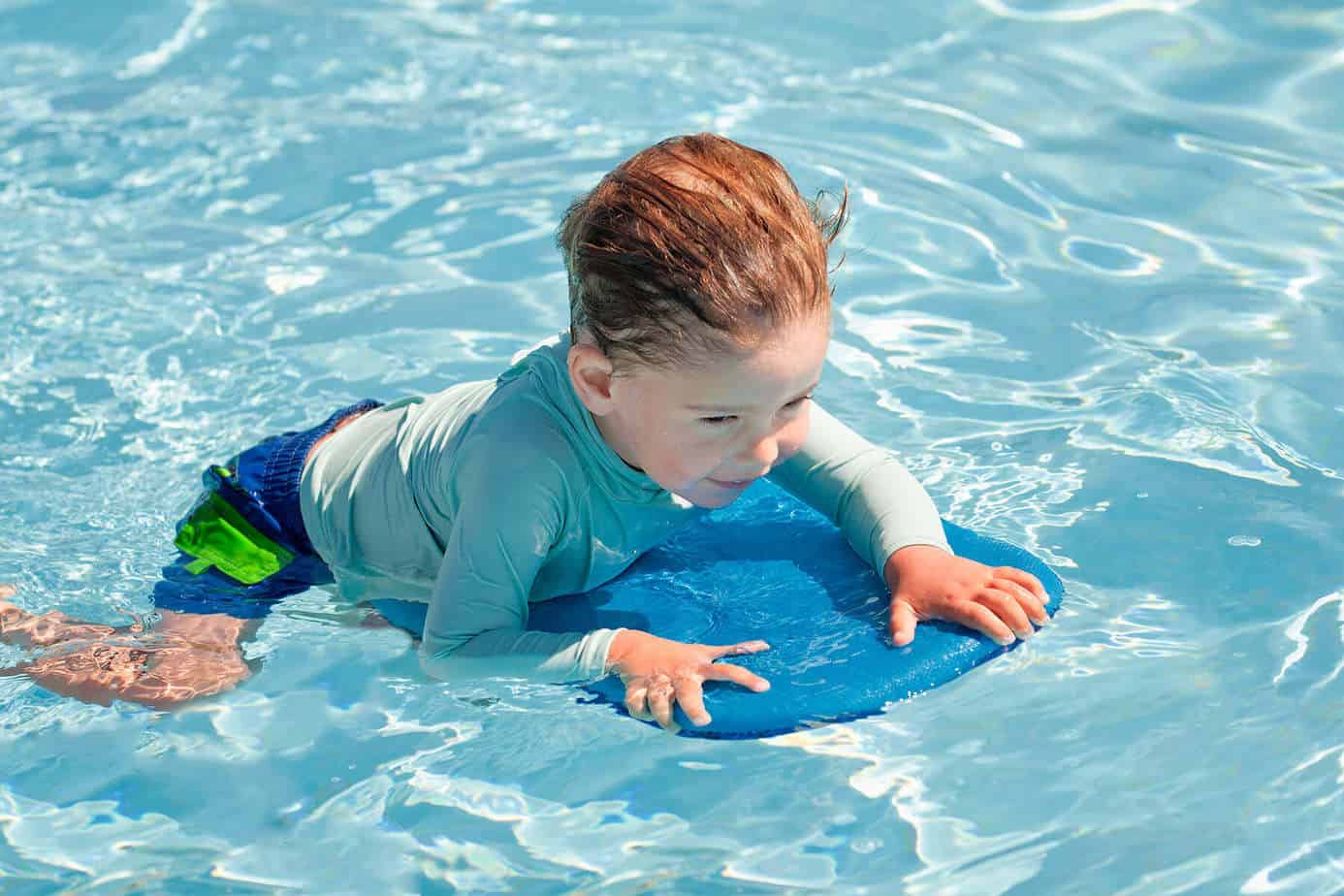Swimming Lessons

Swimming is one of the best ways to cool off in the summer heat. It is also great for your childs’ health, wellbeing and confidence and it teaches them a respect for the water. Swimming and water familiarisation is a fundamental skill that can help parents and tots enjoy the Australian outdoor lifestyle.
But there are some important things to remember when it comes to water and children. Children around any form of water, from a bath to a swimming pool, must be supervised and within arm’s reach at all times. It is important to remember that no child is drown proof. From the last Royal Life Saving Society Australia drowning report, of the 284 reported drowning deaths, 21 were children aged 0-4 years.
So when can my toddler start learning to swim?
The Australian Council for the Teaching of Swimming and Water Safety (AUSTSWIM) recommend infants from six months of age should participate in aquatic activity programs. Infants less than 6 months may not be physically or developmentally ready for any formal aquatic programs, but water familiarity can start at home with some fun play time in the bath.
Which swim program should you choose?
AUSTSWIM recommends looking for infant and preschool programs that offer activities for the following:
- Water familiarisation
- Personal water safety
- Water safety education
- Skill learning
- Social interaction
- Parent education.
As with anything you pay for, you want to ensure that your child gets the most out of their lesson time. It is important to make sure that they are booked into a class with activities that correlate to your child’s development, age and ability.
Give your local aquatics centre a ring. Let them know what you are looking for and ask them questions about what programs they have to offer. Look for an aquatic facility that has AUSTSWIM accredited teachers, this is the industry standard for swimming and water safety, and is the best place to start.
What to expect from your program?
Your swimming program should be set up with a gradual and repetitive learning process that allows children to master the aquatic skills in progressive style. Swimming lessons should take place in an environment that is stress-free and allows for a positive swimming experience. It is best to discuss any concerns you may have about the swim program with the co-ordinator of the swim school directly.
Here are some simple tips that can help make for stress free swimming lessons
- Be well prepared for each lesson by packing a swim bag with a towel, swimwear, swim nappies, goggles, swim cap and another set of dry clothes
- Be sure to adjust your child’s swim goggles before getting into the pool. Your child can practice wearing the goggles and cap at home in the tub. This will help them get used to wearing them
- Take your child to the toilet before the lesson starts to avoid interruption during class time or any accidents
- Arrive at your lessons about 15 minutes early. This may help your child to feel calm and ready to learn when class begins
- Introducing your child to their instructor is a great way to help them feel more comfortable before their lesson
- In the colder months, encourage your child to have a warm shower after the lesson and ensure you have packed an appropriate change of clothes in the swim bag
- It is important to always encourage your child and recognise their swimming achievements. This helps them see swimming as a fun activity and they will continue to learn.
Swimming and aquatic knowledge is a continuous learning process that requires time, development and consistent participation. The great thing is that most swimming lessons are all year round with the majority running in line with the school term calendar. While summer is most popular, practicing during winter has its benefits too. Classes may be smaller which provides more direct contact with instructors allowing your child to build on the skills learnt during the warmer months.


